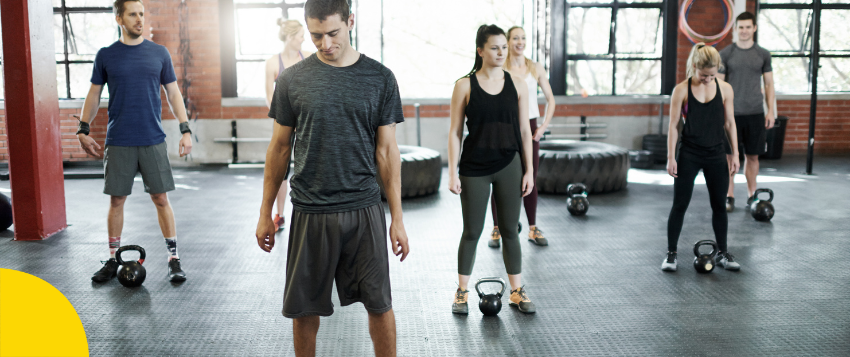Physical activity is a cornerstone of good health, offering benefits that extend far beyond weight management and cardiovascular fitness. Engaging in regular exercise positively impacts various organs and body systems, playing a crucial role in maintaining overall health and preventing chronic diseases. This article explores how physical activity supports the health of key organs and body systems in both men and women, highlighting the importance of staying active for a balanced and vibrant life.
Cardiovascular System: Heart and Blood Vessels

The cardiovascular system is one of the primary beneficiaries of regular physical activity. Exercise strengthens the heart muscle, enhancing its ability to pump blood efficiently throughout the body. This increased efficiency reduces the risk of heart disease, hypertension, and stroke. Additionally, physical activity helps maintain healthy blood vessels by improving blood flow, reducing arterial stiffness, and promoting the formation of new blood vessels. For both men and women, regular aerobic exercise, such as walking, running, or cycling, can significantly lower the risk of cardiovascular diseases.
Respiratory System: Lungs and Airways
Physical activity enhances lung capacity and improves the efficiency of the respiratory system. During exercise, the lungs work harder to supply oxygen to the body, which strengthens the respiratory muscles and improves overall lung function. This increased efficiency helps prevent respiratory conditions such as chronic obstructive pulmonary disease (COPD) and asthma. Regular aerobic exercise can also improve the body’s ability to use oxygen, leading to better endurance and overall respiratory health.
Musculoskeletal System: Bones, Muscles, and Joints

The musculoskeletal system, comprising bones, muscles, and joints, greatly benefits from regular physical activity. Weight-bearing exercises, such as walking, running, and resistance training, help increase bone density, reducing the risk of osteoporosis and fractures, particularly in older adults. Strength training enhances muscle mass and strength, supporting joint stability and reducing the risk of injury. For both men and women, maintaining a strong musculoskeletal system is essential for mobility, balance, and overall physical health.
Digestive System: Stomach, Intestines, and Liver
Physical activity plays a crucial role in maintaining a healthy digestive system. Regular exercise stimulates the muscles in the gastrointestinal tract, promoting efficient digestion and preventing constipation. Additionally, physical activity helps regulate appetite and maintain a healthy weight, reducing the risk of obesity-related conditions such as fatty liver disease and gastroesophageal reflux disease (GERD). Exercise also supports liver health by enhancing its ability to metabolize fats and remove toxins from the body.
Endocrine System: Hormones and Metabolism
The endocrine system, which regulates hormones and metabolism, is closely linked to physical activity. Regular exercise helps balance hormone levels, improving mood, energy levels, and overall well-being. For example, physical activity stimulates the release of endorphins, known as “feel-good” hormones, which reduce stress and anxiety. Exercise also improves insulin sensitivity, reducing the risk of type 2 diabetes and metabolic syndrome. For women, regular physical activity can help regulate menstrual cycles and alleviate symptoms of premenstrual syndrome (PMS) and menopause.
Nervous System: Brain and Nerves

The nervous system, including the brain and peripheral nerves, greatly benefits from physical activity. Exercise increases blood flow to the brain, promoting the growth of new neurons and enhancing cognitive function. Regular physical activity has been shown to reduce the risk of neurodegenerative diseases such as Alzheimer’s and Parkinson’s disease. Additionally, exercise improves mood and mental health by reducing symptoms of depression and anxiety, enhancing overall emotional well-being.
Immune System: Defense Against Illness
Physical activity strengthens the immune system, making it more effective at fighting off infections and diseases. Regular exercise enhances the circulation of immune cells, improving their ability to detect and respond to pathogens. Moreover, physical activity helps regulate inflammation, reducing the risk of chronic inflammatory conditions such as rheumatoid arthritis and certain cancers. For both men and women, maintaining a strong immune system through regular exercise is crucial for long-term health and disease prevention.
Reproductive System: Sexual and Reproductive Health

Physical activity positively impacts the reproductive system in both men and women. Regular exercise improves blood flow to the reproductive organs, enhancing fertility and sexual health. In men, physical activity can increase testosterone levels, improve sperm quality, and reduce the risk of erectile dysfunction. In women, regular exercise helps regulate hormone levels, improving fertility and reducing the risk of polycystic ovary syndrome (PCOS). Exercise also supports a healthy pregnancy by reducing the risk of gestational diabetes and improving overall maternal health.
Conclusion: The Lifelong Benefits of Staying Active
The benefits of physical activity on organ health are profound and far-reaching, impacting nearly every system in the body. For both men and women, maintaining a regular exercise routine is essential for promoting organ health, preventing chronic diseases, and enhancing overall quality of life. By staying active, individuals can support their cardiovascular, respiratory, musculoskeletal, digestive, endocrine, nervous, immune, and reproductive systems, ensuring a healthier, more vibrant life.
Incorporating a variety of exercises—such as aerobic activities, strength training, flexibility exercises, and mindfulness practices like yoga—can provide comprehensive benefits and keep your body and mind in optimal health. Remember, it’s never too late to start reaping the rewards of physical activity, so find an exercise routine that you enjoy and commit to it for a lifetime of health and well-being.
Disclaimer – Healthi and its associates offers health and fitness information and is designed for educational and entertainment purposes only. You should consult your physician or general practitioner before beginning a new fitness program. You should not rely on this information as a substitute for, nor does it replace, professional medical advice, diagnosis, or treatment. If you have any questions or concerns about your health, you should always consult with a physician, general practitioner, or other qualified healthcare professional. Do not disregard, avoid or delay obtaining medical or health related advice from your healthcare professional because of something you may have read on our publications or lectures. The use of information provided though the urban wellness service is solely at your own risk and is not medical or healthcare advice.






